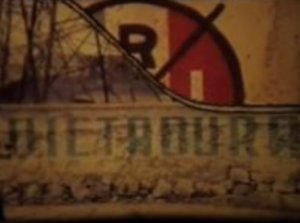
"La película realizaba un montaje lúdico al yuxtaponer los mensajes políticos oficiales escritos en las bardas de la ciudad con imágenes o textos que los ironizaban o alteraban su sentido. El título viene de un juego de palabras con el fraseo de las sílabas "Mé-xi-co" / jí-ca-ma", que solían usarse entonces como porra en los partidos de fútbol de la selección nacional" (Vázquez Mantecón, 2012).
"The movie had a playful montage by juxtaposing official political messages written in walls around the city with images or text that ironized them or altered their meaning. The title comes from a word game that played with the phrasing of the syllables "Me-xi-co / ji-ca-ma", a popular chant during the national team soccer games of the time" (Vázquez Mantecón, 2012).
Amateur news film about the outbreak of the Manchurian Incident in 1931. "Jikyokubin consisted of a set of eight news films, including titles such “Jihen hassei chokugo no Hōten” (Mukden right after the Incident), “Aikokugō o mukau!” (Welcoming patriotic aircrafts!), and “Manshūkoku no kensetsu o iwau” (Celebrating the establishment of Manchukuo). Six out of the eight films were made by Imai, and the rest were shot by two other members of the small-gauge film society at Manchuria Medical College." - Noriko Morisue, "Filming the Everyday: History, Theory, and Aesthetics of Amateur Cinema in Interwar and Wartime Japan" (Yale University: PhD Dissertation, 2020): 188.
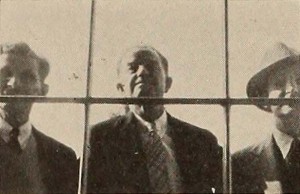
"In their adroitly handled John Doe, Citizen, Frances Christeson and Harry Merrick have produced a photoplay of politics in city government that can be compared to a theatrical picture in dramatic values and clarity of treatment. Designed to teach students the value of the vote, the danger of neglecting to understand the issues in city affairs and some of the methods by which machine politicians keep themselves in power, this picture also shows how well amateurs can handle a serious film in dramatic form. Particularly notable, from the movie maker's viewpoint, is how cleverly and effectively the producers have circumvented such apparently insurmountable problems as showing a crowded town meeting in a large auditorium, night airplane shots of rows of homes with lighted windows and the construction of a new sea wall on the city's waterfront. Needless to say, these sequences were not handled by means of large studio sets and hundreds of extras; but they are just as effective as if they had been, and therein lies the genius of these remarkable movie makers." Movie Makers, Dec. 1938, 597.
"A fictional account of an election as it might occur in a small city. Illustrates the indifference of the average citizen to public affairs and emphasizes that if the government is not run by the people the government will run them." Educational Film Guide, 1953, 367.
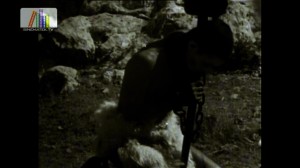
“Ruhi Su ve Rahmi Saltuk türküleri eşliğinde yoksulluk ve emek sömürüsünü ve mücadeleyi, direnişi farklı, ilginç bir kurgu ile anlatmış. 13 dakikalık 1969 yılı koşullarını düşünerek izlemek gerekiyor.” Sinematek.tv: http://sinematek.tv/kordugum-1969-2/ (15 Oct 2019).
“Accompanied by Ruhi Su and Rahmi Saltuk’s folk songs, the film tells the story of poverty, struggle, and resistance in a different way, with an interesting montage. This 13-minute-long film requires audiences to acknowledge the contexts of the year 1969 in viewing.” Sinematek.tv: http://sinematek.tv/kordugum-1969-2/ (15 Oct 2019).
"The Last Review, by George A. Ward, ACL, is an almost faultless example of a military motion picture, into which is woven a story that has the rare quality of evoking deep emotion from the audience. Actually, the film is a record of the camp life of the 105th Field Artillery of the New York National Guard, in its summer instruction quarters at Pine Camp, N. Y. Dramatically, it is the story of a Field Artillery private soldier and his friend, the oldest horse in the regiment. Condemned to be shot because of age and the approaching motorization of the command, the horse is reprieved and is given a review by the entire regiment in honor of "the artilleryman's best friend." The tale was not fictional, but actual. The hero was a member of the regiment, he loved the veteran horse and the review was actually held, not for purposes of filming but as a tribute. The film ends with the review, while actually the reprieve was only temporary and the equine actor has since been destroyed because of age. In this film, Mr. Ward exhibited cinematography of high quality and much incidental beauty. He contrived, as well, to give a military record that errs in no detail and that has no false note. To crown it all, he filmed a scenario, in itself moving and acted with complete sincerity." Movie Makers, Dec. 1934, 534.
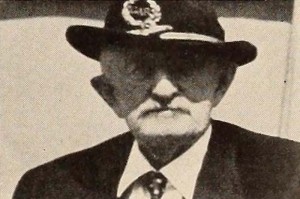
"Charles O. Barr, jr., in Long Remember, has done an extremely difficult thing admirably. This is a Kodachrome record of the recent last meeting of Union and Confederate veterans of the American Civil War on the battlefield of Gettysburg, in Pennsylvania. Because the persons of chief interest, the veterans themselves, were unable to contribute motion to any real extent, Mr. Barr's problem was to avoid using movie footage for still photographs, and yet not to offer an incomplete record of the interesting and historically important gathering. Aided by title wordings that were both dignified and exciting, the maker of this film managed to give to it a sweep of action that, without them, would have bogged down badly. There was motion, of course, in the parades, but these, of themselves, would have been trite fare, had they not been related to the battlefield by shots of watching veterans and by a whole series of admirable angled shots of the statues and markers on Gettysburg field. It is noteworthy that what might have been the dull portions of the record — the construction, housing and victualing arrangements — were given very intelligent, brief handling." Movie Makers, Dec. 1938, 619-620.
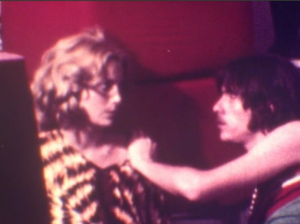
"Luz externa fue una de las producciones más ambiciosas del súper 8 mexicano. El guión se basaba en el monólogo de Ernesto, un machín jipiteca, que relata a un amigo las peripecias con su novia Raquel. Posteriormente el guión sirvió como la base del cuento con el mismo título que apareció como parte del libro El rey se acerca a su templo. Tanto la película como el cuento se abocaban a describir el abanico amplio de la juventud clasemediera urbana contracultural que había aparecido a fines de los años sesenta y principios de los setenta: los macizos que acceden al consumo de drogas, las muchachas de buena familia que se acercan a ese mundo, los nuevos conversos a la revolución social o los intelectuales que participan del ambiente con simpatía" (Vázquez Mantecón, 2012).
"Luz externa [External light] was one of the most ambitious productions of the Mexican super 8. The script was based in the monologue of Ernesto, a 'machin' hippie, that tells a friend about his adventures with his girlfriend Raquel. The script served later as the base for a short story with the same title that appeared as part of the book El rey se acerca a su templo [The king approaches his temple]. Both the movie and the short story described the wide range of the middle class urban countercultural youth that emerged at the end of the sixties and the beginning of the seventies: the strong men that had access to drugs, the girls from good families that entered that world, the new converts to social revolution or the intellectuals that sympathize with that ambiance" (Vázquez Mantecón, 2012).
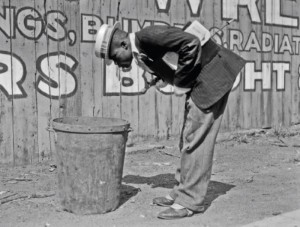
"Mr. Motorboat's Last Stand, written and produced by John A. Flory, who was assisted in photography by Theodore Huff, ACL, carries the subtitle, A Comedy of the Depression. It has, however, nothing in common with the typical motion picture comedy but is, instead, one of the very few films made each year that represent an intelligent attempt at experimentation with the motion picture medium. It is a story of Mr. Motorboat, an unemployed negro, who lives as elegantly as circumstances will permit in an automobile dump and who sells carefully washed and polished apples on a street corner. The picture turns into fantasy as Mr. Motorboat appears to ride to work in the morning in one of the cars of the dump that stands motionless without its wheels. Then the fantasy becomes more complete when he makes a bit of money and uses it as bait with which to fish in Wall Street. This he does literally and actually and with marvelous results until the crash of 1929. Simultaneously with the explosion of the prosperity bubble, Mr. Motorboat's competitor smashes his apple stand and the picture ends in a magnificent chase sequence, Mr. Motorboat after the competitor. This picture is photographed superbly well, and the editing is as smooth as that of the professional studio product. It is filled with remarkable directorial touches and cinematic symbolism and, although it suffers to some extent from the haphazard admixture of fantasy and realism, it is decidedly the best experimental film of the year." Movie Makers, Dec. 1933, 522.
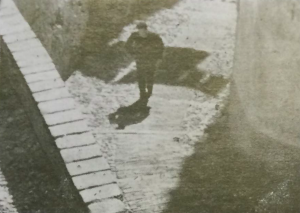
"a sogg. lungh. norm." Feature fiction film
"La Nave, realizzato da Giovanni Paolucci, collaboratore tecnico Pietro Portalupi. Il difetto di questo film consiste nello scenario, nel non aver cioè gli autori trattato il tema in forma meno dispersiva, il protagonista, uomo disorientato ed inutile, senza uno scopo nella vita trova, col lavoro in una nave che alla fine viene varata e nell'atmosfera del fascismo, la sua strada. Un tema simile poteva essere trattato retoricamente o in modo più semplice e persuasivo; gli autori si sono attenuti alla via di mezzo, riuscendo talora in buone sequenze, talora in sequenze dall'azione dispersiva. Migliore è la prima parte, quando Paolucci descrive il rapporto dell'uomo col mare, e prima, la sua solitudine; la fotografia è in queste scene piuttosto notevole."
"The Ship (La Nave), directed by Giovanni Paolucci, technical collaborator Pietro Portalupi. The defect of this film is in the scenario and in its authors not treating the subject in a less unorganized way. The protagonist, a disoriented and useless man, without a purpose in life, finds his way by working on a ship that is eventually launched and in the atmosphere of fascism. Such a theme could have been treated rhetorically or in a simpler and more persuasive way; the authors stuck to the middle ground, succeeding sometimes in good sequences, sometimes in sequences with dispersive action. The first is the best part, when Paolucci describes the man's relationship with the sea, and before that, his loneliness; the photography is quite remarkable in these scenes."
—Il ventuno 28 (Review of the G.U.F. of Venice), May 1935, p. 17-18
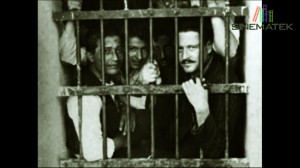
“Sinematek.TV film arkeolojisine devam ediyor! 1979 yılında Stockholm’da düzenlenen Nazım Hikmet’i Anma Gecesi’ndeki Ruhi Su, Zülfü Livaneli, Tuncel Kurtiz’in performansları Muammer Özer tarafından kaydedilmiş ve İlk defa Sinematek.tv tarafından yayınlanıyor.” Sinematek.tv: http://sinematek.tv/nazim-hikmet-anmasi-stockholm-1979/ (15 November 2019).
“Sinematek TV continues its film archeology! Muammer Özer’s film of a commemoration night for Nazım Hikmet displays Ruhi Su, Zülfü Livnaeli, and Tuncel Kurtiz and Sinematek.tv screens it for the first time.” Sinematek.tv: http://sinematek.tv/nazim-hikmet-anmasi-stockholm-1979/ (15 November 2019).
Total Pages: 9